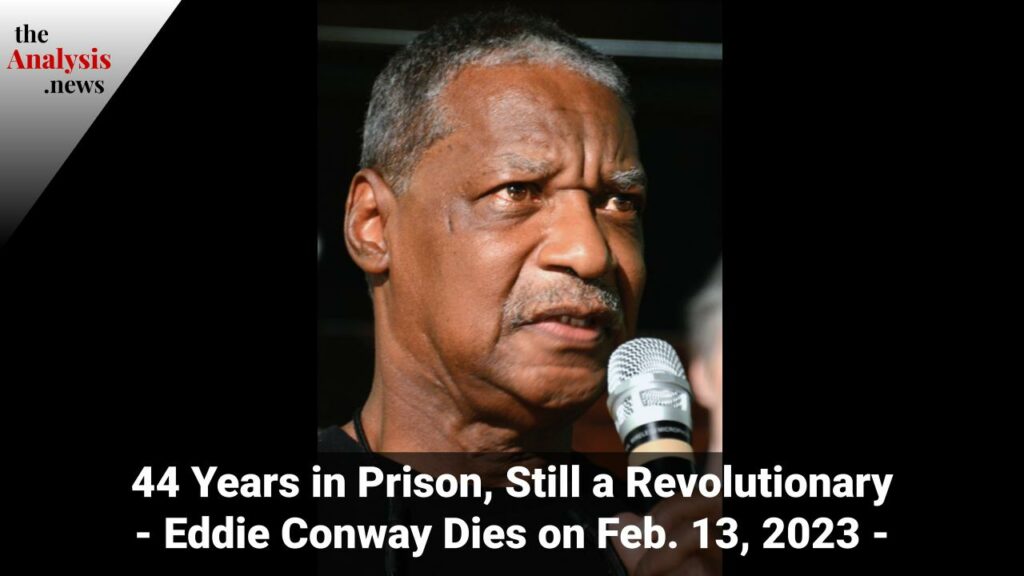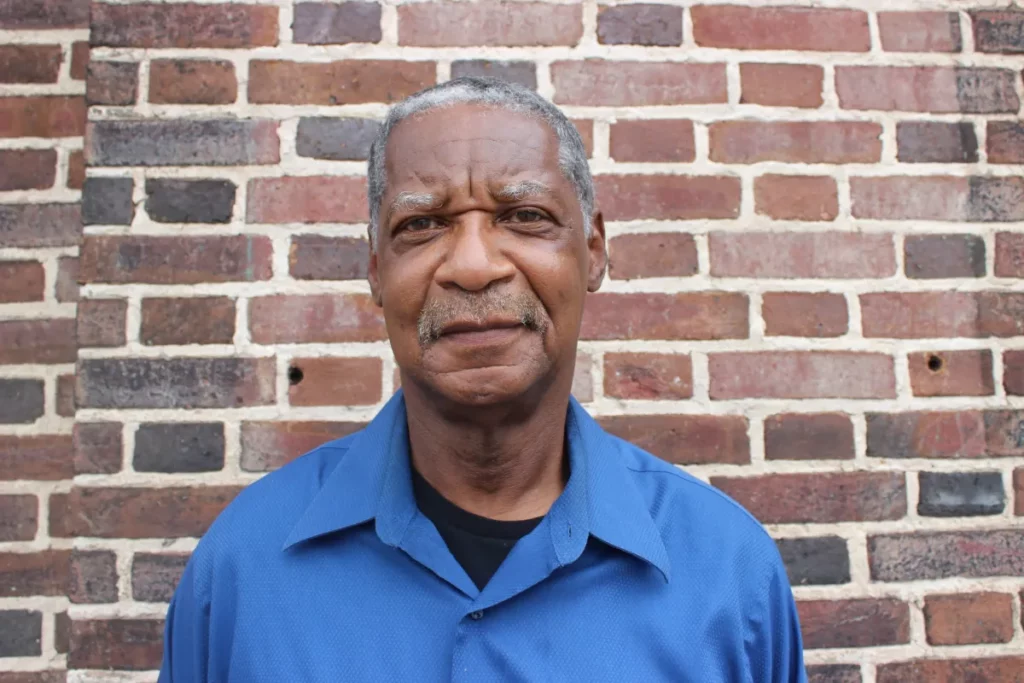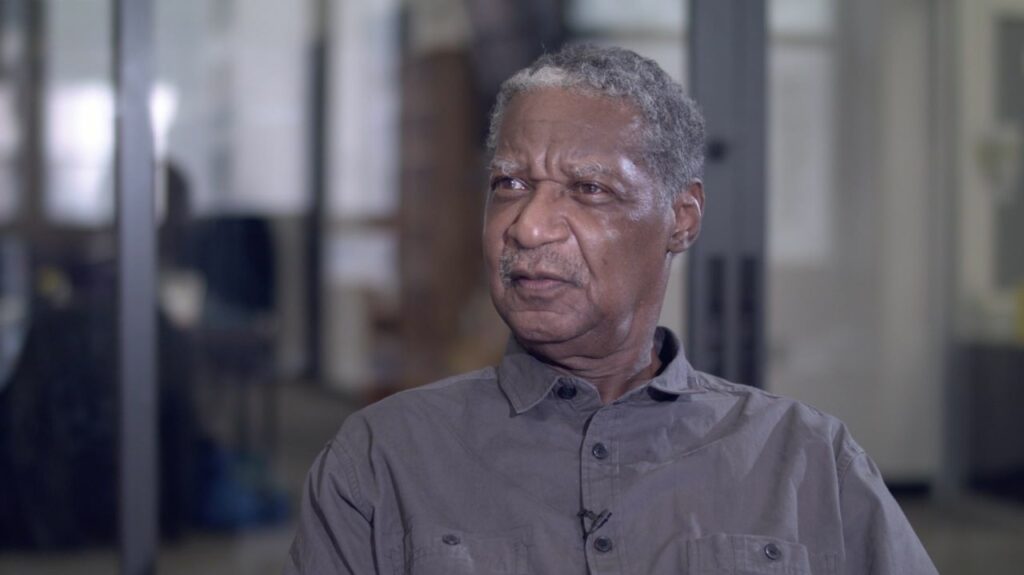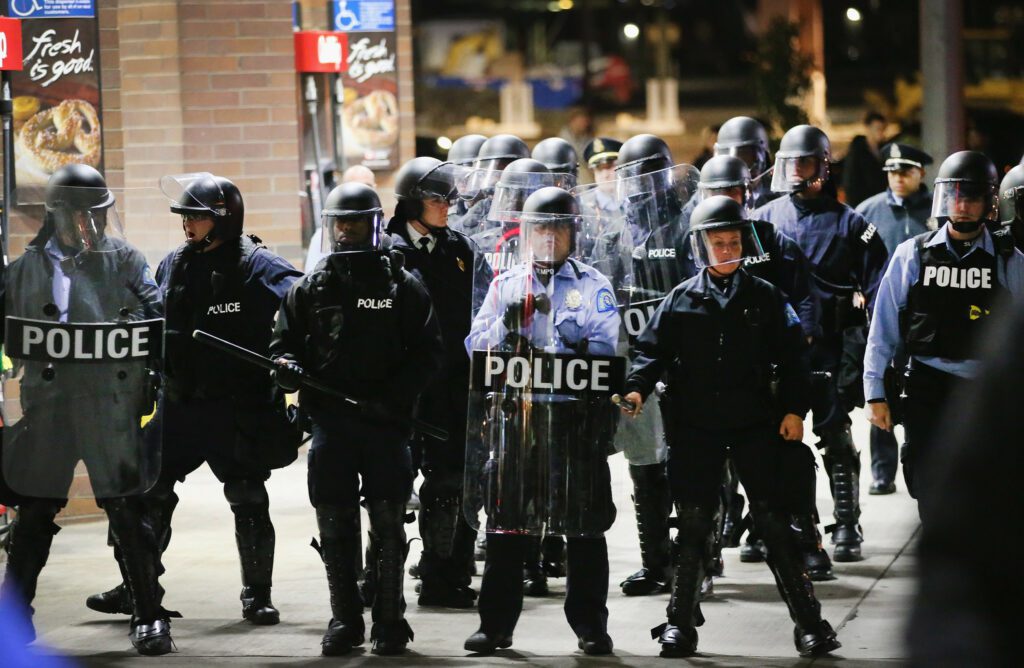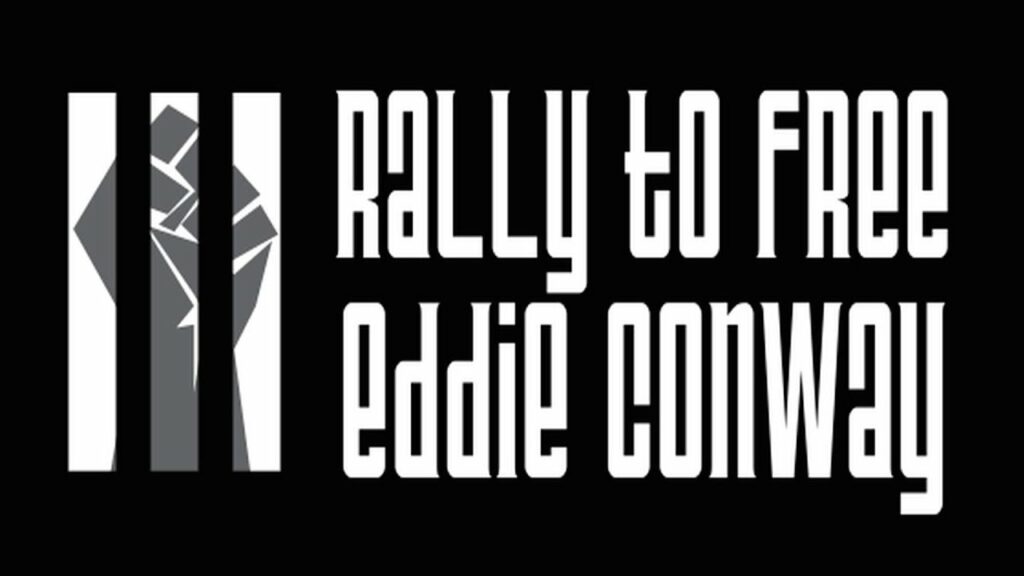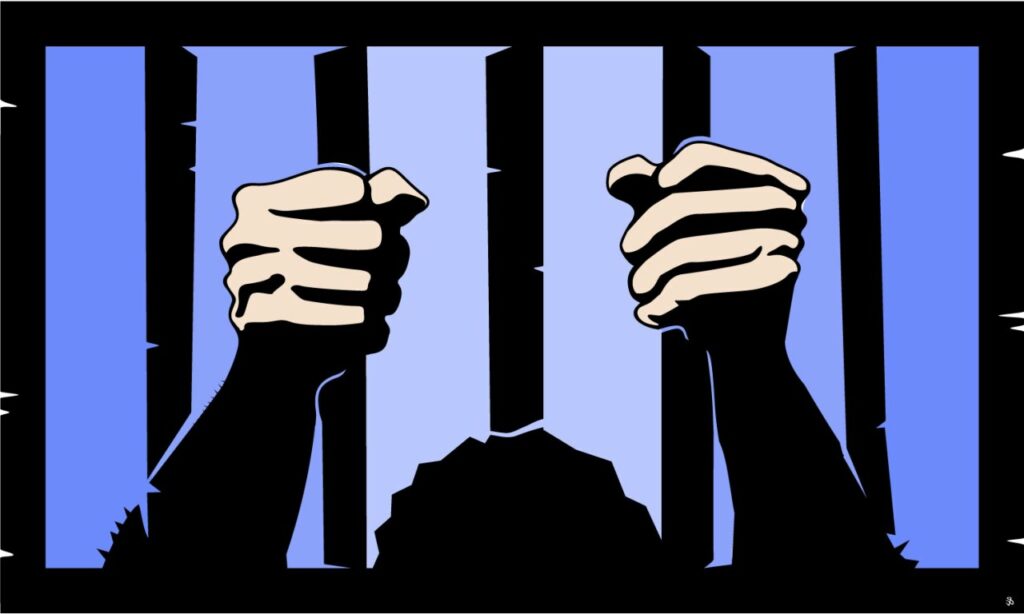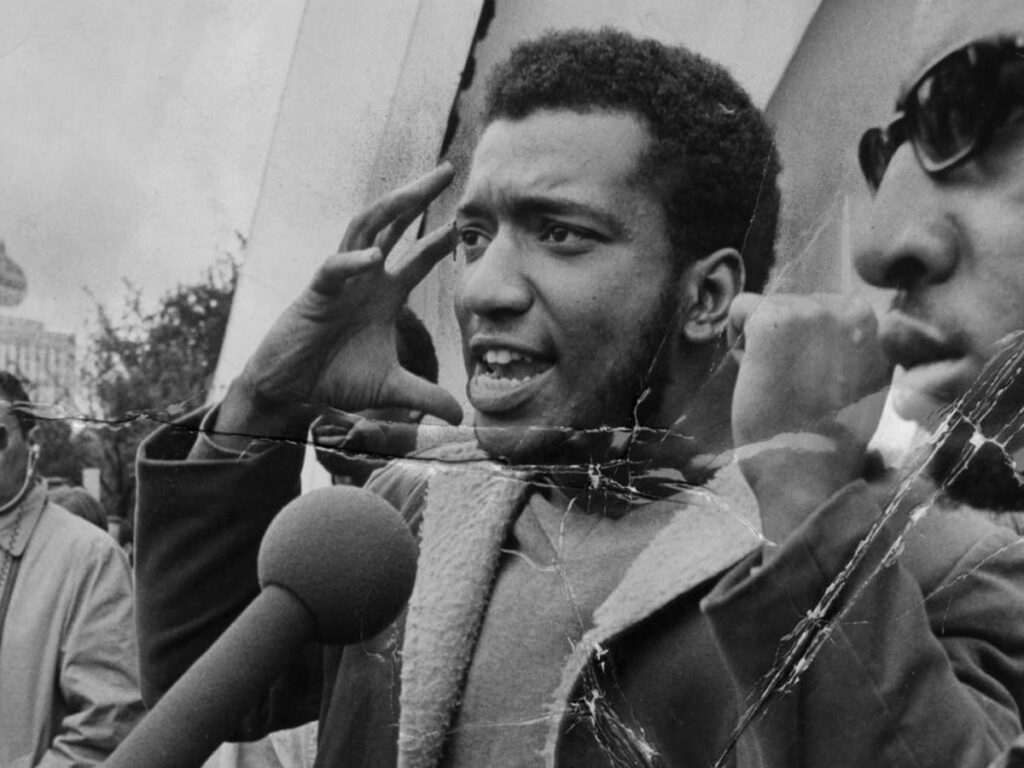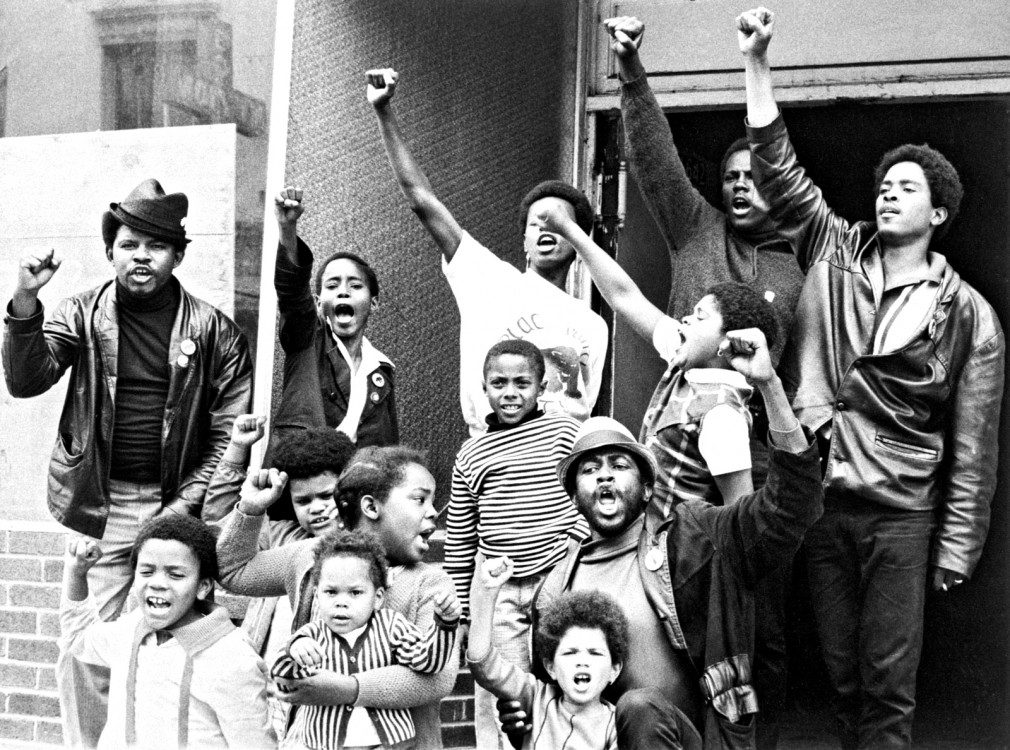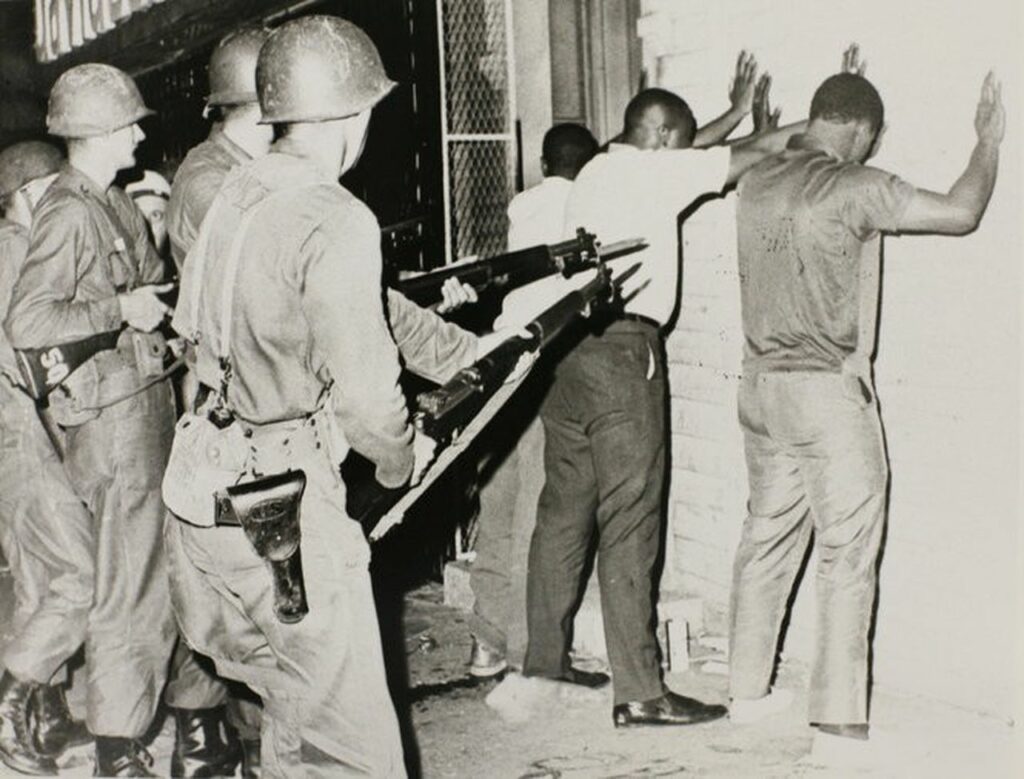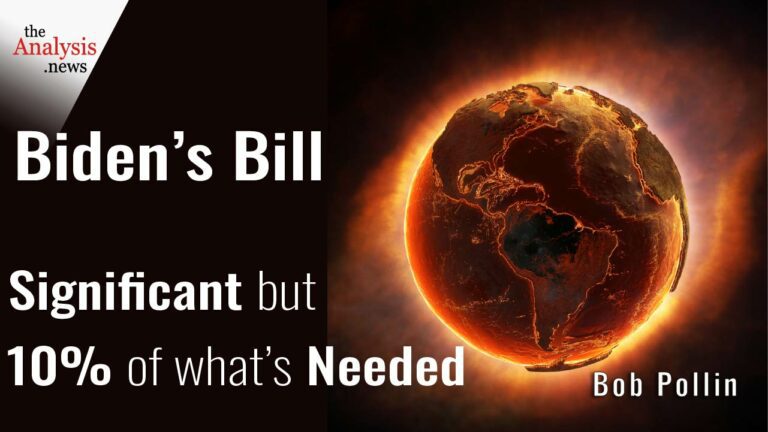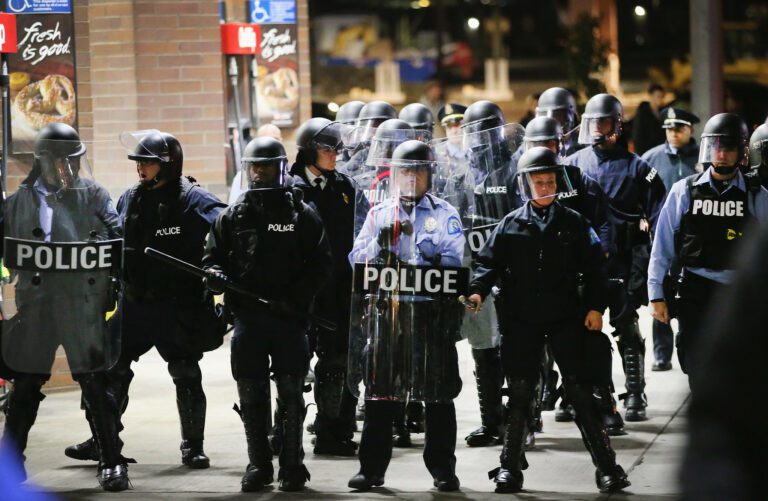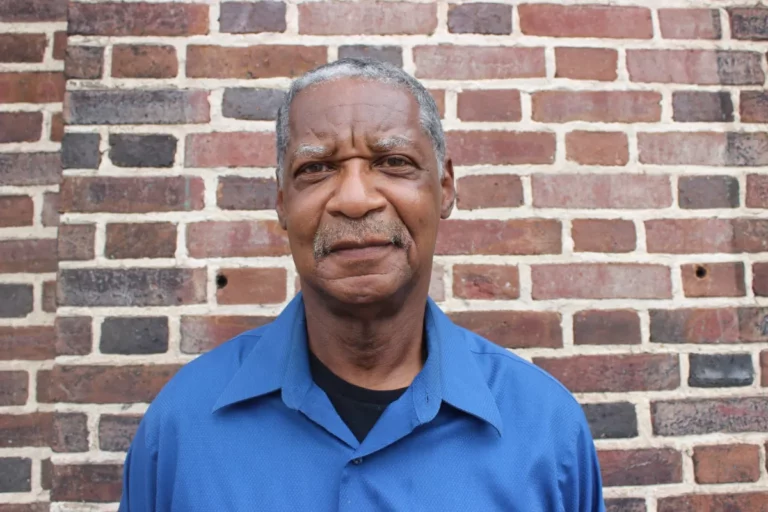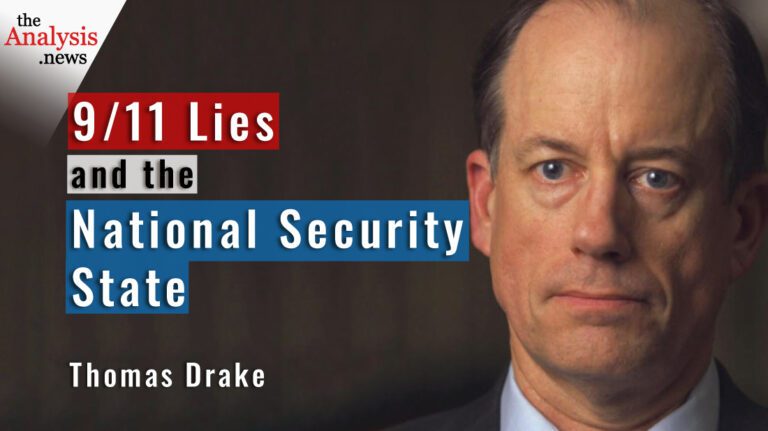Mr. Conway describes the campaign by police agencies to destroy the Black Panthers, and how he joined the Baltimore chapter, which he later found out was founded by an agent of the NSA. This is an episode of Reality Asserts Itself, produced on September 10, 2014.
PAUL JAY, SENIOR EDITOR, TRNN: Welcome back to Reality Asserts Itself on The Real News Network. I’m Paul Jay in Baltimore.
Eddie Conway in his book Marshall Law: The Life & Times of a Baltimore Black Panther writes, I was working for the fire department in April 1968 when Dr. Martin Luther King Jr. was assassinated. I’d felt for some time that King’s importance for black people had begun to wane. His commitment to nonviolence in the face of such extreme force seemed to have lost its resonance in our community. Black people were tired, angry, and frustrated. The time had come for us to do more than just sing in the streets and march on capitals. Not that we necessarily knew what else to do at the time, but it was certainly clear that we needed to change the strategy. The fact that Malcolm X and Martin Luther King had been assassinated within three years of each other was too much for many blacks, and the result came in the form of riots that raged across the nation.
Now joining us in our studio is Eddie Conway. Just to remind everybody, Eddie Conway was the lieutenant of security for the Baltimore chapter of the Black Panther Party from ’68 to 1970. He was convicted for a murder for which there is no evidence that he had anything to do with the murder, and there was a jailhouse informant who was notorious for giving prosecutors what they wanted to hear, and based mostly on that testimony he was convicted. He was released about six months ago and joins us now in the studio.
Thanks for joining us again.
EDDIE CONWAY: Okay.
JAY: So I read this quote from ’68. This was a very transformative moment for you, too, as it was for many people across the country, particularly for African Americans. What did you decide to do after the assassinations?
CONWAY: Well, one of the things that happened, actually, immediately after the assassination and during the riots, because I was in the fire department, there was an emergency statewide call for all essential personnel to report to wherever their station is, their post is, etc. And so I actually had my little firefighter uniform on, the whole nine yards.
JAY: Describe what was going on in the streets of Baltimore.
CONWAY: It was rioting. There was rioting, East Baltimore, West Baltimore. There was a tremendous amount of police presence. I went out in the street.
JAY: National Guard.
CONWAY: The National Guard.
JAY: I’ve seen footage of this, but you see that it’s like an occupied city.
CONWAY: In the course of three blocks, I was stopped six times by six different military forces, so to speak–the Baltimore City Police Department, the National Guard, the state troopers, the Baltimore County police, the National Park police, the FBI. At some point I decided that it would probably be wise not to try to go to work, even though I was trying to report to work [crosstalk]
JAY: This is you wearing your firefighter outfit.
CONWAY: Yeah. You know. And I had been threatened at least three or four times with guns, you know, at gunpoint. You know.
And so that experience kind of told me that it wasn’t a fair and balanced way in which people were being treated. You know, I mean, it’s still–at that time I’m still thinking integration, reform, the rest of that stuff, but I’m seeing also that we’re being outnumbered and outgunned and abused in our communities. And so it was [at] that point that I decided to look and see. And, of course, my experience in the fire department itself–it was called the Edgemere Fire Department, even though the long it belonged to Sparrow’s Point. My experience–.
JAY: Sparrow’s Point, just for everybody who knows, this is where Bethlehem Steel was.
CONWAY: Bethlehem Steel was.
JAY: This used to be, like, the biggest steel, I think, place in the world.
CONWAY: Yeah. It employed probably five or six thousand people. At least 3,000 of them were black. And Edgemere–
JAY: –which was the underpinnings for a stable black community in Baltimore until the steel industry disintegrated.
CONWAY: Yeah. And that’s one of the reasons why we attempted to integrate the white-collar jobs. And, of course, this fire department was one of them.
But inside the fire department, there was just organized racism, organized white supremacy groups, guns being passed back and forth, all kinds of /psəˈdeɪʃən/ talk in terms of what they would do to the black community if we rioted or if we attempted to come out in suburbia, etc. And actually it was scary. It wasn’t scary to me, because as–if I walked into an area or room in which this was going on, everybody would shut up, because they had pretty much seen that I was already pissed off. You know, I had had enough, right? But it was scary in the sense of knowing that they had organized all around the black communities. Around the urban centers, there was this hostile, white-supremacist, militant, minutemen, militia kind of thing that was being organized from the average white John Doe. And it was scary. And it was like, God, do we realize we’re cut off? Do we realize we are in trouble? If something happens, we won’t even be able to feed ourself.
And so it made me start thinking in terms of, well, what are we doing in the black community to protect ourself, to look out for ourself? How are we–I mean, what are we going to do if these nuts actually get a chance to act out? And that’s what kind of drove me to look in for the Black Panther Party and to look for other militant kind of things that were going on, because at that time it was clear that racism was, like, really high. This was the kind of backlash from integration, the backlash from the school integration, the busing of children, etc. And there was a lot of hostility going on.
JAY: This is now–we’re ’68, moving into ’69.
CONWAY: Sixty-eight. Yeah, we’re in ’68 now. And so I decided to go and join some other people that at least had the interests of protecting the community at heart.
JAY: So you start looking for some kind of more radical thing you can participate in.
CONWAY: Yes.
JAY: What are your options? What’s around?
CONWAY: Well, at the time, there’s something called SOUL School. And basically it was a black culture/nationalist organization that was advocating, you know, that we recapture our culture, that we find ourself in our African roots, etc., and that we form black kind of structures. There was some other things, Black Men’s Development Center that had, like, a black liberation army kind of thing that was more show than substance. I mean, they looked good, but it didn’t seem like they were doing anything. And then there was the Black Panther Party.
JAY: And what did you know of the Panthers at that time?
CONWAY: Well, at that time I had started reading–and the Nation of Islam. I don’t want to forget the Nation of Islam. I had started reading the Panther Party paper, the Nation of Islam paper–at the time, I think that was Muhammad Speaks. I was reading the bulletins from SOUL school. I was reading the Black Man’s Development Center–I can’t even remember the name of it anymore. I was reading their stuff and looking pretty much at all the different groups. And to me, the Black Panther Party was the only group that was, one, addressing the needs of the community in terms of feeding children, in terms of organizing–
JAY: So breakfast programs.
CONWAY: –you know, self-defense, in terms of educating, and so on. So I decided that, okay, they are the people that I need to find. So I actually went in search for them, and I found them. And to my surprise, it was more of a party than a political apparatus. At the time that I found them, people were swinging across the rooms on chandeliers. The guys were partying. The women were partying. It was, like, a ball. And I’m saying, well, okay, I’m looking at these papers and I’m looking at what’s going on in Chicago and in New York and in California, and people are partying here. Something’s wrong. And, of course, my initial thing was, well, okay, they didn’t have any leadership, they didn’t have any discipline, they didn’t have an understanding of what was going on, and perhaps if we got in there and worked with them and me and a couple of other guys actually joined–.
JAY: The Panther organization headquartered in Oakland didn’t have oversight in the sense of what was going on in Baltimore?
CONWAY: It grew too fast. It had oversight in the sense that it took people to California and trained them and sent them back, right? The Panther Party grew too fast. I guess at the end of ’66, the formulation–you know, in October ’66 it actually started, but it didn’t really take hold until, like, mid ’67. And then it exploded across the country.
JAY: It became the way to express the rage, especially after ’68.
CONWAY: Yeah. And people just started joining, group formations started, whole organizations took off their green or black or red or whatever and became Panthers. And then they sent people to California, and they got trained. And it happened–it was too fast. Expansion was too fast. The training was too short. And then there was just constantly new people bombarding the formations. Even after the training was there, there were people joining in as–even as people were joining, there were people leaving.
JAY: And a lot of those people joining, we all know now, and you came to know, were cops. And, in fact, you told me that the guy that actually founds the Panther Baltimore chapter is a member of the National Security Agency.
CONWAY: Yes, the Maryland state chapter, is–.
JAY: Maryland.
CONWAY: Yes. His name was Warren Hart, and he worked for the National Security Agency and formulated the apparatus that became the Baltimore Panthers. And the Panthers expanded to–.
JAY: And the idea is the Panther Party will be a magnet to attract militants, and you’ll get to know who are the militants.
CONWAY: And get them locked up and get them arrested, and some of them actually disappeared. One of my friends actually was murdered as a result of this guy. He sent him out on a mission that was unauthorized and illegal, and he got in an entanglement with the police and ended up getting killed. I actually investigated that. That’s really what triggered my investigation of him, because it–.
JAY: Him being Hart.
CONWAY: Hart, yeah, him being the captain at the time, right? Because it didn’t make any sense what had happened. At the time, all the newspapers were on strike in Baltimore. And so I went up, actually, and knocked on the doors and questioned people and did interviews and whatnot and discovered that it was just–the way this guy got killed, it didn’t make any sense at all. And then eventually I went and questioned how, why he was in that area, and what was he doing, and who had sent him. And all the information led back to this captain. And then I started investigating the captain and determined that he wasn’t who he said he was, because he didn’t live where he said he was living, he didn’t work where he was supposed to be working. But at that point I realized that I was dealing with somebody that was connected and had some kind of police cover. So I actually reported to California, and they sent an investigation team down from, like, New York. And during the process of investigating, he fled. He fled Maryland. He fled the country.
JAY: Now, this is, as we all know now, or anyone that follows this, this was part of a national campaign, COINTELPRO,–
CONWAY: Yes.
JAY: –which involved the National Security Agency, the FBI, and many local police forces.
CONWAY: Military intelligence, etc.
JAY: All targeting black militants.
CONWAY: Yeah, yeah, every police force–state police, the local police, etc. And, of course, we didn’t discover that until the mid ’70s. I mean, by that time they had destroyed the Black Panther Party. By some estimates, they had at least 600 agents provocateurs, police informers, and undercover agents. And in the first book that I write, well, that I wrote–it’s called The Greatest Threat–I actually did my master’s research for my graduate program on it.
JAY: In prison.
CONWAY: In prison, right? And one–I’m going to just give you an example. One of the things that I discovered in doing the research–I actually got all the COINTELPRO papers and I got the information and actually did the research to kind of, like, validate everything that I was saying. And one of the things that happened was that up in New York, Malcolm X–when Malcolm X was assassinated and he was dying on the stage, there was a guy bent over him giving him mouth-to-mouth respiration. And this guy’s name was Gene Roberts. And this guy was Malcolm X’s chief bodyguard.
After Malcolm X had died, this guy ended up joining the Black Panther Party in New York. And, of course, his credentials was that he was Malcolm X’s bodyguard. Yo, who else could you trust? You’ve got to trust Malcolm X’s bodyguard, right? He joined the Black Panther Party, and he incited a conspiracy that the leadership of the Black Panther Party in New York never participated in. But they used his incitement and they locked up 21 leaders of the New York Black Panther Party, the captain from the Jamaica, Queens; captain from the Bronx; captain from Manhattan; so on. Right? And they locked up 20–including /ˌtuːpɑksˈmʊmbə/, they locked up 21 members. They kept them in jail for about two years. They had them under $100,000 bail each, right? They took them to trial, and in a half an hour of the trial–no, actually, they had the trial, then the jury went out. In a half an hour they came back and they exonerated all of them. Why? Because this guy, Gene Roberts, that was bent over Malcolm X was an actual officer of New York City Police Department–boss–was the thing. And his job was to infiltrate black militant organizations and disrupt and disband them. And we don’t know if he actually choked Malcolm X to death there on the stage–of course, Malcolm X had been shot numerous times, so he probably would have died anyway. But he was a police. And then, when he went and joined the Black Panther Party, he brought in fake dynamite and he brought in fake plans to commit sabotage and that kind of stuff. And all of this was his doing. And he was always a police officer the whole entire time. And once the jury discovered that, they released, they let everybody out. But it cost millions of dollars in bail money and years of people’s lives, because people spent two years. And that was just bail money. The lawyers, the legal fees, etc.
But that particular incident there, I’d say, for one, caused a split in the Black Panther Party, caused–the New York chapter and New Jersey, I believe it was, split away from Oakland, you know, Chicago, New Orleans, Baltimore, etc. It caused a split that ended up leading to conflict between the Black Panthers.
JAY: Split over what?
CONWAY: A split over whether or not the Black Panther Party should be resisting and fighting a guerrilla warfare.
JAY: Armed.
CONWAY: Armed warfare, or whether or not we should still be building survival programs and organizing in the community.
JAY: And this issue of the split that happened in the Panthers over armed struggle and community organizing was a very profound issue. And I would be quite sure the police had a lot to do with how this whole debate unfolded, too. So we’re going to pick this up in the next segment.
So please join us for the continuation of our interview with Eddie Conway on Reality Asserts Itself on The Real News Network.
Never miss another story
Subscribe to theAnalysis.news – Newsletter
“Marshall “Eddie” Conway was an American black nationalist who was a leading member of the Baltimore chapter of the Black Panther Party who in 1971 was convicted of murder of a police officer a year earlier, in a trial with many irregularities.”

